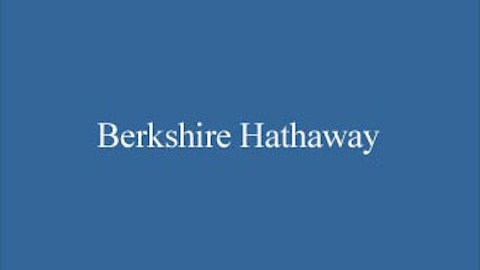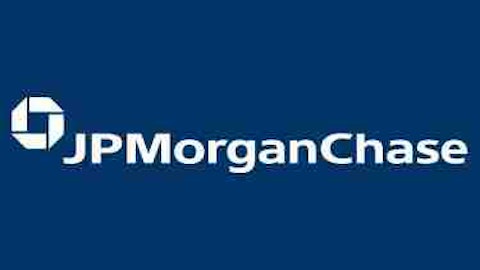Through the financial crisis that is now referred to as the Great Recession, there were two banks that seemed to come out ahead. Wells Fargo & Company (NYSE:WFC) and JPMorgan Chase & Co. (NYSE:JPM) have been singled out as examples of how to manage through a crisis. Each company has returned to their old dividend raising ways, and some would suggest that they are the measuring stick by which other banks should be measured. That being said, Wells Fargo’s recent earnings report shows that there could be some cracks in the foundation of this theory.
Quality Means Everything
If there is anything investors have learned over the last few years, it’s to watch the credit quality at financial institutions. When a bank’s credit quality breaks down, it causes management to pull in the reins on loan growth. Lower credit quality also leads to many extra expenses to manage these problem loans. Since Wells Fargo has gotten a lot of attention for the amount of mortgage loans the company is originating, it makes sense to watch their mortgage credit quality carefully.

In the current quarter, one of the banks with the best credit quality was BB&T Corporation (NYSE:BBT) at just 1.2% of non-performers. By comparison, even Bank of America Corp (NYSE:BAC) showed non-performers at 2.62%. However, Bank of America’s percentage includes other real estate owned, which means properties that have already been foreclosed on. This means without other real estate owned, Bank of America’s ratio would have been lower. On the surface, J.P. Morgan’s non-performing percentage of 3.12% looks worse than Wells Fargo at 2.56%. However, beyond the headline number, there is a big issue at Wells.
Wells Fargo’s largest percentage of non-performers is from 1-4 family real estate mortgage loans. Since 55.92% of non-performers for the company come from these loans, investors should be concerned. Wells Fargo has garnered headlines for their huge increase in first mortgage production. The bad news is, their non-performing percentage in this category is 4.58%. If this high percentage continues, Wells Fargo’s non-performing assets percentage will only get worse.
Organic Growth Is What Really Matters
If Wells Fargo isn’t doing quite as well as J.P. Morgan or BB&T, there seems to be a pretty clear connection between organic growth and bottom line results. In traditional banking there are two numbers that define the success or failure of a bank. Great banks are able to grow loans and deposits, lesser banks are not able to do so.
When it comes to deposit growth, while Wells Fargo’s growth of 7.39% in average deposits looks pretty good, their competition all performed better. For all of Bank of America’s challenges, the company’s average deposits grew by 11%. J.P. Morgan grew deposits by 10%, and BB&T showed deposits increasing 8.1%. When three of your largest competitors are able to grow deposits faster, it doesn’t argue for a premium stock price.
If we look at loan growth, ironically both Wells Fargo & Company (NYSE:WFC) and J.P. Morgan did worse than their lesser thought of competitors. Wells Fargo showed anemic loan growth of just 2.42%, and J.P. Morgan did even worse with average loans down 5%. Bank of America reports loans in multiple segments, and most performed significantly better than Wells Fargo. The bank’s first lien production increased 6%, and global wealth loans were up over 6% as well. Bank of America’s consumer real estate loans were down, but this is primarily because of the bank’s continued work to dissolve their troubled loan assets. When it comes to BB&T, the bank reported total loans up 9.3% and none of their competition did as well.
What Bank Is The Best Value?
If you look at the valuation of each of these banks and other factors, I have a hard time picking against BB&T over Wells Fargo, J.P. Morgan, or Bank of America. J.P. Morgan has the lowest expected earnings growth rate at 6.45%, and the second lowest yield at 2.54% of the four banks. While Bank of America is expected to grow earnings by better than 18%, the company’s yield is almost non-existent at 0.35%.
Wells Fargo is a popular pick in the banking sector, and with EPS growth expected at 9.33% and a yield of 2.86% the numbers look pretty good. However, BB&T showed the best deposit and loan growth of the four. The bank also had the lowest percentage of non-performing loans at 1.2%. On a valuation basis, BB&T offers the best combination of growth and income with 10.87% EPS growth expected and a yield of about 3%. Wells Fargo’s two big problems are BB&T’s two biggest strengths. The best value of the four banks seems pretty clear.
The article 2 Worries From This Big Bank originally appeared on Fool.com and is written by Chad Henage.
Copyright © 1995 – 2013 The Motley Fool, LLC. All rights reserved. The Motley Fool has a disclosure policy.





